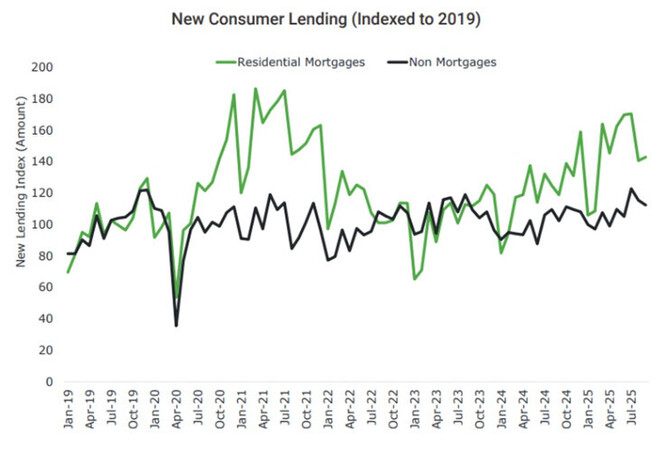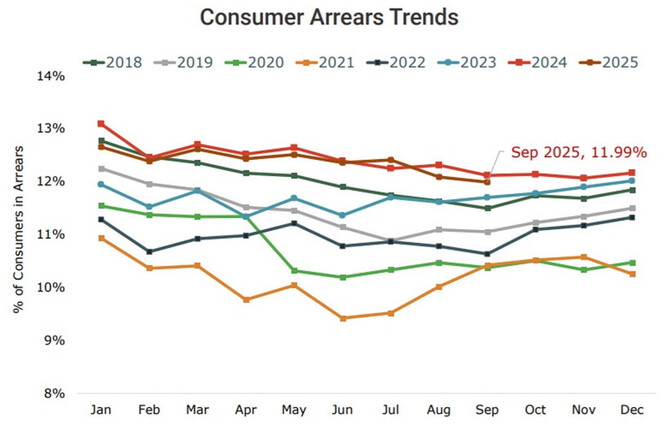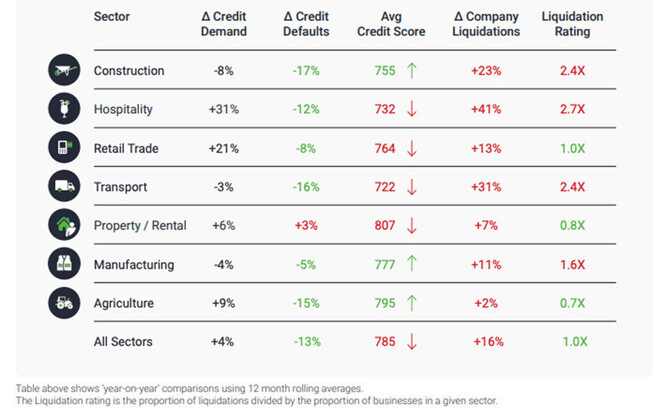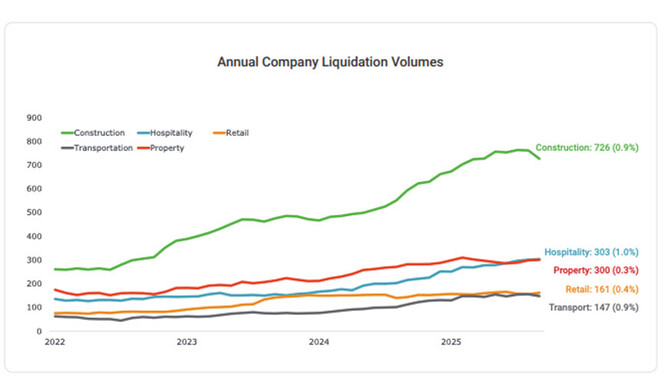According to New Zealand’s Credit Bureau Centrix, we’re seeing an overall improvement in credit demand, arrears, and business defaults.
Centrix’s latest monthly creditor report indicates encouraging signs in credit trends, despite a persistently challenging economic environment.
Managing Director, Keith McLaughlin, says that while some sectors continue to face uncertainty, there is an overall improvement in credit demand.
"The continued decline in the Official Cash Rate (OCR) is beginning to reshape New Zealand’s credit landscape, providing a much-needed boost to both households and businesses," McLaughlin said.
The Reserve Bank (RBNZ) has steadily reduced the Official Cash Rate (OCR) since August 2024, dropping from a peak of 5.5% to 2.5%. It is expected that we’ll see another 25 basis point cut in the last review for the year in November.
Increase in Household Lending
One of the biggest indicators of economic confidence is a notable lift in household lending. New residential mortgage lending has risen to 21.1% year-on-year, and overall new household lending has increased 20.2% compared to last year. This reflects increased market activity and a growing number of borrowers refinancing for lower rates following the recent OCR cuts.
Additionally, new non-mortgage lending (i.e. credit cards, vehicle and personal loans, Buy Now Pay Later, and overdrafts) increased 10.3% year-on-year.
Consumer Arrears Fell
Consumer arrears continue to see improvements, as consumers reported in arrears fell to 11.99% of the credit active population in September. This is an improvement from 12.09% in August. Centrix also claims that the number of people behind on payments went down from 468,000 in August to 465,000 in September.
Business Credit Demands Up
Business credit demand has increased by 3.5% compared to the same period last year. This is led by the hospitality sector, which went up by 31% over the past 12 months, followed by Education/Training (+22%) and Retail Trade (+21%).
However, business credit defaults are down 13% year-on-year and have significantly eased from the peak of last year.
Liquidation Trends Remain Elevated With Signs of Improvement
While liquidation remains high, 7 of the 19 industry sectors have shown notable signs of improvement, mainly wholesale trade, financial and insurance services, and professional services.
The construction and hospitality sectors are the two industries with the highest rates of company liquidation. 726 construction firms were liquidated in the past year (up 23% year-on-year increase), and 303 hospitality liquidations were recorded (up 41% year-on-year).
We should also note that the construction liquidations account for only 0.9% of all registered companies in the sector.
A Clear North and South Island Divide
Credit conditions across New Zealand vary in their recovery. The South Island shows an overall stronger credit improvement score that’s driven by lower arrears and lending growth. This is, in part, thanks to the high confidence in dairy farming and an improving outlook for construction and hospitality.
Meanwhile, a significant portion of the North Island continues to lag. Northland, Gisborne, Taranaki and Wellington are some of the affected regions, with higher arrears and business liquidations.
Key Takeaway
According to McLaughlin, the final quarter of 2025 shows some “cautiously optimistic signs”, and it will be interesting to see the impacts of the Credit Contracts and Consumer Finance Act (CCCFA) legislation in the coming months.
This look-ahead is a promising sign for businesses in New Zealand and a positive step towards rebuilding confidence across all sectors. Businesses are encouraged to secure their business with the right risk assessment and mitigation strategies this last quarter.
Bonded NZ helps business owners remain efficient in economic uncertainties through comprehensive and tailored business insurance. If you’re looking to protect yourself and your business, we have a range of products suitable for your needs.
For more information about our insurance coverage, contact our team today.
Read the Centrix Credit Indicator Report here.




